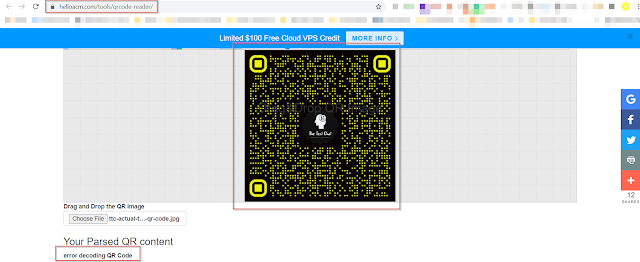I read the below query in TTC's Telegram chat. The discussion had started on this thread and fellow members here were responding. Further, I read this line and it made me look into it -- "The question was we have to use valid username and password..and perform a negative testcase".
The Default Thinking and Applying Interface
Including me, I see it is subconsciously common for us to approach the problem statement visualization in terms of Graphical User Interface. When I ask why it is so, maybe it is rooted in our subconscious thinking i.e. with first order and second order or any orders of thinking.
I want to give a try to attempt approaching it by reminding and asking self the below questions:
- Is it a GUI specific problem?
- Is it a problem that is tied to the context of GUI?
- What does this question encapsulate within and open as an interface?
- What forms do these interfaces take when I stand out of specific interface?
- Should I stick to one interface to learn and attempt this problem?
Identify the Tests and Framing of Tests
We test to learn
- Does the system do what it is supposed to do and how, why, and when?
- When the system does not do what it is supposed to do and how, why, and when?
To me, these are tests that help me to learn when the system responds and behaves in the other way than I expected.
I can start to identify the straight use cases for inputting an error (a human introduced error) at a given state/data/event; then look for the behavior of the system. It is good when we can keep identifying and ideating the use cases.
We get limited with use cases as we continue to think about use cases. That said, for sure we will identify and frame the tests within identified use cases. But, we need tests that help to learn when the system fails in doing what is supposed to do.
To supplement it there is another way, which I use. I do not say this is the only way to supplement. I use multiple approaches to supplement and identify the tests. When I do so, I ask the question to the system with the help of these tests and evaluate the response of the system.
Questions to Identify the Priority Tests
When I'm asked a question in the interview, I ask for details that help me to test better or to demonstrate my deliverable better. I will watch the questions that I ask!
If I were the candidate who got this question in an interview, I would ask the below questions. When I learn this is good enough for the initial tests, I will pause with questions. I move to identify and frame the tests using the responses I got for the questions that I asked.
These questions will surely help me to be precise and close to the context that better demonstrates my testing skills. If it is not close, then there is a problem (or a difference) in my presenting and expectations in the interview. I will have to address it with the help of the interviewer.
Questions:
- What is the interface where I'm entering the username and password?
- Where is this authentication used?
- On UI (if so which UI), or CLI, or touch interface, or what is its interface type?
- At which layer of the system this authentication is used?
- Where is the format of username and password?
- What is used as Authorization identity on successful authentication?
- What happens if my authentication is not successful in the UI you want me to test?
- How do I understand that UI is communicating to me that my authentication is not successful?
- How is this authentication processed?
- Where the authentication is mapped to authorization and stored for references?
- What protocol is used to communicate in authentication?
- What protocol and communication order is used to grant and revoke authorization?
- Who uses this authentication and authorization?
- To know the different means of doing the same
- Is there any other form of authentication that grants me the authorization?
- Do these different entry points of authentication update my authorization?
- Will I have different authorization data to authenticate? If yes, how the data, states, and events are maintained for my authentication and account?
- What's the language and Unicode supported by this system?
- Will the languages and Unicode used in the system have any impact when I try to authorize by changing the language and Unicode? How does the system understand these differences and maintain one state of data with authorization?
- Are there any computing differences for authentication and authorization on big and small endian machines? If yes, how and for what context of the system's behavior, processing, and decision?
- Where and how the authentication and authorization details are processed, stored, and presented back.
- Is there any specific reason for doing it in this particular way?
- How you have strengthened the authentication process to grant the authorization?
- For example, 1FA, 2FA, nFA, what else?
- Does any other system use your authentication to authenticate and authorize?
- Do you use SSO for authentication and authorization?
- What testability layer do I have that I can make use of to support and identify the tests?
- Does this testability layer help me to identify more tests and also classify them?
- the target surface area to start my work
- what it takes and brings back, and how










